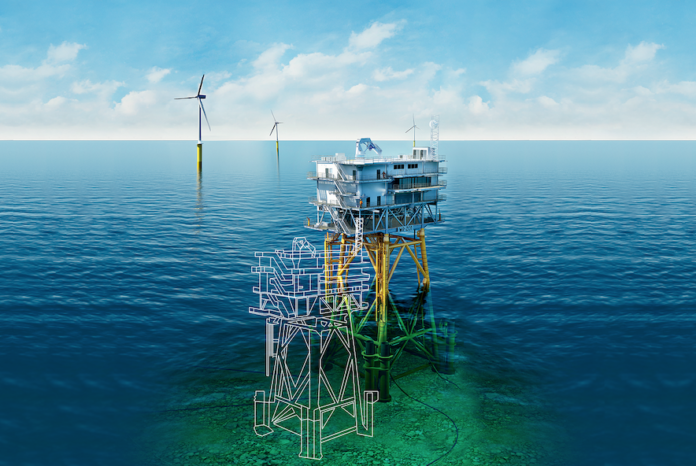A pilot test of Ramboll’s True Digital Twin technology at the Wikinger offshore wind farm has revealed a significant analytical potential to increase the lifetime of offshore wind foundations and substations. The test is part of the ROMEO project, an initiative supported by Horizon 2020, an EU research program that aims to advance the energy transition in Europe and reduce the costs of offshore wind energy.
“Our goal with this project is to demonstrate the feasibility and impact of data-driven O&M strategies by having the True Digital Twin continuously deliver instantaneous insights on the physics of the assets that are being monitored,” says Ursula Smolka, lead consultant of wind asset management at Ramboll. “The results from this pilot test are stunning, revealing a significant potential for lifetime extension and cost reductions in operating and maintaining offshore wind structures.”
Based on only a few sensors at easily accessed locations, the patterns of movements are captured to let the True Digital Twin undergo the full history of loads. The True Digital Twin can detect structural integrity issues like failure of jacket braces, excessive scour or corrosion. Extensive simulation studies showed that monitoring modal properties like natural frequencies and mode shapes not only can detect anomalies but can also identify the type of anomaly if combined with a design model database.
The results of the test have been summarized in two reports which Ramboll has delivered to its ROMEO project partners. According to the reports, the full power of a True Digital Twin lies within the continuous monitoring of the factors that can affect the structural integrity of a wind turbine over its entire lifetime. The monitoring process can be done at all possible locations using SHM solutions, cloud computing and advanced mathematical calculations.
Ramboll has also demonstrated how fatigue can be monitored at all possible locations of the structure while keeping the costs low using a modal decomposition and expansion algorithm. A verification study has confirmed that damage equivalent loads matched well with loads estimated with the conventional strain gauge approach.
During the next phases of the ROMEO project, Ramboll and its partners will continue exploring the added value of continuously monitoring offshore wind structures. The project partners anticipate a reduction of human offshore time for annual inspections and a reduction in the number of planned offshore visits.




